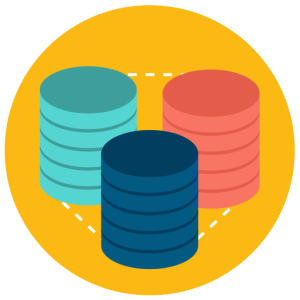
RDBMS
Data is organized in tables defined by the relations of the data into organized tables. Tables can have Primary AND/OR Unique keys.They can also have

His is a story of dedication.
Migrated to the USA to find a better future for his family. He had been Oracle DBA for the past 22 years in the USA. Before he migrated to the USA, he worked for the Union Bank of India in many places for 20+ years.
He wished to share his knowledge with everyone thirsty for the knowledge to maintain and manage various RDBMS.
He has enriched himself with Oracle Documentation and Books by great teachers like Steve Adams, Tom Kytes, Jonathan Lewis, and many others (non-exhaustive lists of highly learned in Oracle, MS SQL Server, MySQL, and PostgreSQL).
There were many websites of veterans in the subject documenting their experiences in their environments. Many websites documented the behavior of SQL in their environment based on their OS Resources, Hardware Limitations, Application Requirements of Resources, etc.
In his 20+ years, he resolved SAN, OS, HBA, Multipath Redundecy, Configuration of the Database, Defining Oracle Database Block Usage – Defining ITL Slots, Data Segments (Table, IoT, Index, etc.) multi transactions. Oracle backup and recovery by the utility RMAN and User-Managed Backup.
Oracle complies majority principles of RDBMS and defines the relation between instance and database and in many different ways. They could be “one to one” and “many to one”.
MySQL and MS SQL Server are also Relational Database Management Systems (RDBMS). This defined relation between the instance and database is only “one to many”.
His understanding of PostgreSQL was an Object-Oriented Relational Database Management System (OORDBMS) with a different kind of version management system. But relation between the instance and database is only “one to many” like in MySQL and MS SQL Server
The Performance Tuning of MySQL (through enabling/setting some parameters within the database), tuning for the hardware, tuning for best performance based on the best practices, and tuning for your workload.
A lot of SQL Server Tuning articles on “SQL Server Central”, “SQLTips”, “RedGate”, etc. and many books penned by Kalen Delaney, Benjamin Nevarez, Dmitri Korotkevitch, Uday Arumilli, Marek Chmel, etc. helped a thorough understanding and fine tuning of SQL Server.
For PostgreSQL Tuning Books written by Henrietta Dombrovskaya, Boris Novikov, Regina Obe, Ibrar Ahmed, Gregory Smith, Enrico Pirozzi, and EDB documentation help. A Japanese PostgreSQL DBA published rich information by Hironobu Suziki on “https://www.interdb.jp/pg/”. He developed a tool pg_plan_inspector (available on https://github.com/s-hironobu/pg_plan_inspector) is a great tool for studying the internals.

Data is organized in tables defined by the relations of the data into organized tables. Tables can have Primary AND/OR Unique keys.They can also have

RMAN (Recovery Manager) is a backup and recovery manager supplied for Oracle databases (from version 8) created by the Oracle Corporation. It provides database backup,

Oracle Database (commonly referred to as Oracle RDBMS or simply as Oracle) is a multi-model[4] database management system produced and marketed by Oracle Corporation.It is








Copyright © 2002-2023 Srinivas Maddali, All rights reserved.